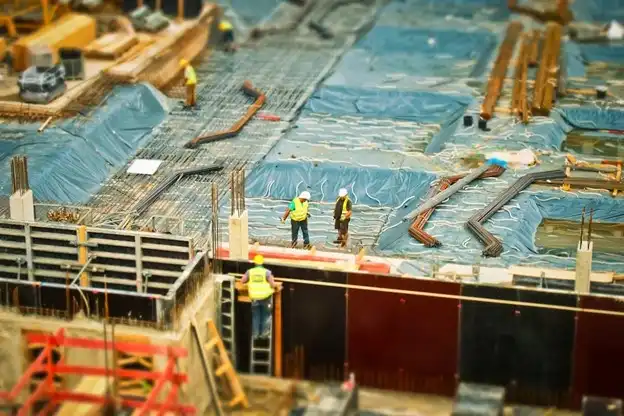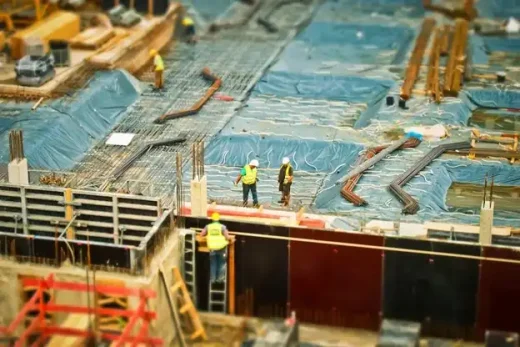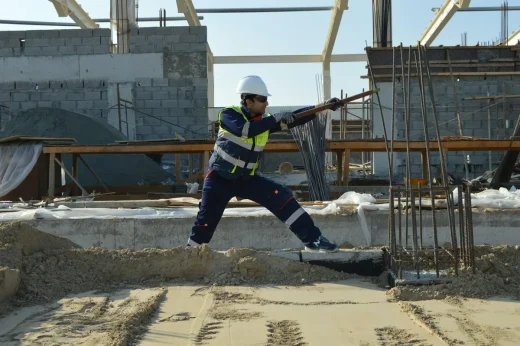Sustainable building practices transforming construction, Build hazards
Six Modern Sustainable Building Practices Transforming Construction
25 October 2024
Sustainable building practices are reshaping the construction landscape.
With eco-consciousness on the rise, innovative strategies aim to reduce environmental impact and enhance resource efficiency. From adaptive reuse to sustainable material usage, these methods are redefining how we design and construct buildings today.
Here are just six modern sustainable practices that are transforming construction.
1. Using Recycled Building Materials
Using recycled materials in construction creates eco-friendly buildings and promotes resource efficiency. By incorporating these materials, the industry not only reduces landfill waste but also conserves raw resources.
Some common recycled building materials include:
- Crushed concrete from demolished structures can be reused for foundations or road bases.
- This is recyclable without quality loss, making it ideal for sustainable construction projects.
- Repurposed glass finds new life in tiles, countertops, or insulation.
Choosing such materials helps builders lower their carbon footprint while supporting sustainable growth.
These practices signify a crucial shift towards environmentally responsible development today.
2. Leveraging Sustainable Building Materials
Following on from the last section, incorporating sustainable materials in construction projects plays a crucial role in minimising environmental impact and promoting resource conservation.
Various materials offer eco-friendly solutions, such as:
- A natural insulator that reduces energy consumption.
- Reclaimed Wood. Provides character while reducing demand for new lumber.
- Fast-growing and strong, ideal for floors and structural elements.
- Offers renewable options for flooring with excellent thermal properties.
- Straw Bales. An age-old material reimagined for modern insulation needs.
These alternatives help builders reduce their carbon footprint while creating healthier living spaces.
3. Utilising Precision Tools for Sustainable Material Management
In modern construction, precision is key. By using precise material calculations, builders minimise waste and optimise resources.
For instance, an asphalt calculator helps in determining the exact quantities of hot mix asphalt needed for a project. This reduces over-ordering and excess usage, which aligns with sustainable practices by conserving materials and energy.
Accurate calculations also prevent unnecessary costs and environmental impact from material surplus. Such tools support the goal of sustainable building by ensuring every resource contributes effectively to the project’s success without excess waste.
4. Adaptive Reuse
Adaptive reuse transforms outdated buildings, preserving cultural heritage while meeting modern needs. This approach revitalises communities by repurposing spaces like warehouses into trendy apartments or historic factories into vibrant retail hubs.
The process saves resources and reduces demolition waste, contributing to sustainability efforts. It requires creative design solutions that balance historical elements with contemporary functionality.
By maintaining a structure’s core, developers cut down on new materials and energy use associated with traditional construction.
Adaptive reuse not only conserves history but also promotes sustainable growth in urban areas, offering an exciting blend of old charm and new purpose for future generations.
5. Prefabrication
Prefabrication revolutionises construction by assembling components off-site before transporting them for quick installation.
This method significantly cuts down waste since precise manufacturing ensures material efficiency, reducing leftovers commonly seen in traditional building sites.
Additionally, it slashes energy consumption through streamlined processes and reduced on-site machinery use. Projects benefit from faster timelines due to simultaneous site preparation and component production.
By minimising delays related to weather or logistics, prefabrication enhances sustainability without compromising quality or design flexibility. It represents a smart choice for eco-conscious builders seeking efficient solutions in modern construction projects today.
6. Water Conservation Strategies
Lastly, innovative water conservation strategies transform modern buildings into sustainable models. These techniques often include rainwater harvesting systems, which collect and store rain for irrigation or plumbing use.
Plus, greywater recycling repurposes used water from sinks and showers to reduce overall consumption. And smart fixtures like low-flow toilets and faucets minimise waste without sacrificing performance.
Green infrastructure, such as permeable pavements and bioretention areas, manage stormwater effectively on-site.
Together, these methods create efficient resource use in urban environments while lowering operational costs – ensuring a balance between human needs and ecological preservation for future developments.
Comments on this guide to Sustainable building practices transforming construction article are welcome.
Construction Safety
Construction Safety Posts
Common construction site injuries
Construction industry health and safety importance
Why Construction Safety Is Important
Building Articles
Residential Architecture
Comments / photos for the Sustainable building practices transforming construction page welcome.







